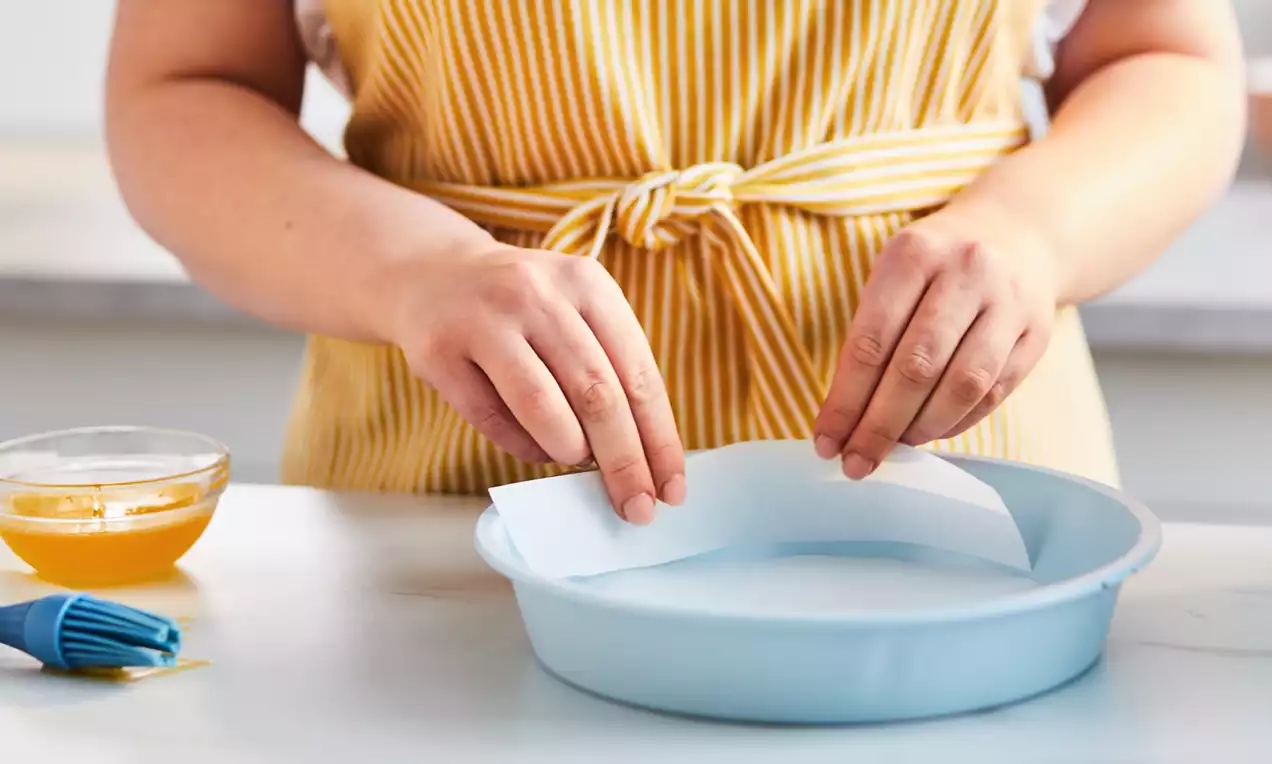
How to Line and Grease a Cake Tin
Making a cake can be a rewarding and tasty task but it's not without its moments of tension. Will the cake rise evenly? Has it perfectly browned without being overdone? And even after the cake has baked and cooled, certain challenges remain. Mainly the worry associated with getting the cake out of the baking tin in one piece.
Fortunately, this worry can be effortlessly solved by using one, straightforward tool: parchment paper. In this guide, we’ll look at how to use parchment paper to line round, square and rectangular cake pans. We’ll cover how to measure and fit your paper like a professional and answer any frequently asked questions you may have.
Parchment paper is a heat resistant non-stick paper that can be used in several ways when baking. Not only does it stop your baked treats from sticking, but you can also use it to lift your cakes out of the tin as well as keeping your tins nice and clean.
Here’s what you need to do, starting with the essential equipment and the steps you should follow:
• Pencil
• Scissors
• Parchment paper or baking paper
• Cake tin
• Pastry brush
• Butter, margarine or vegetable oil (for dairy free recipes)
• A dust of flour or Dr. Oetker Dark Cocoa Powder (for chocolate cakes)
Measure and Cut Your Parchment Paper
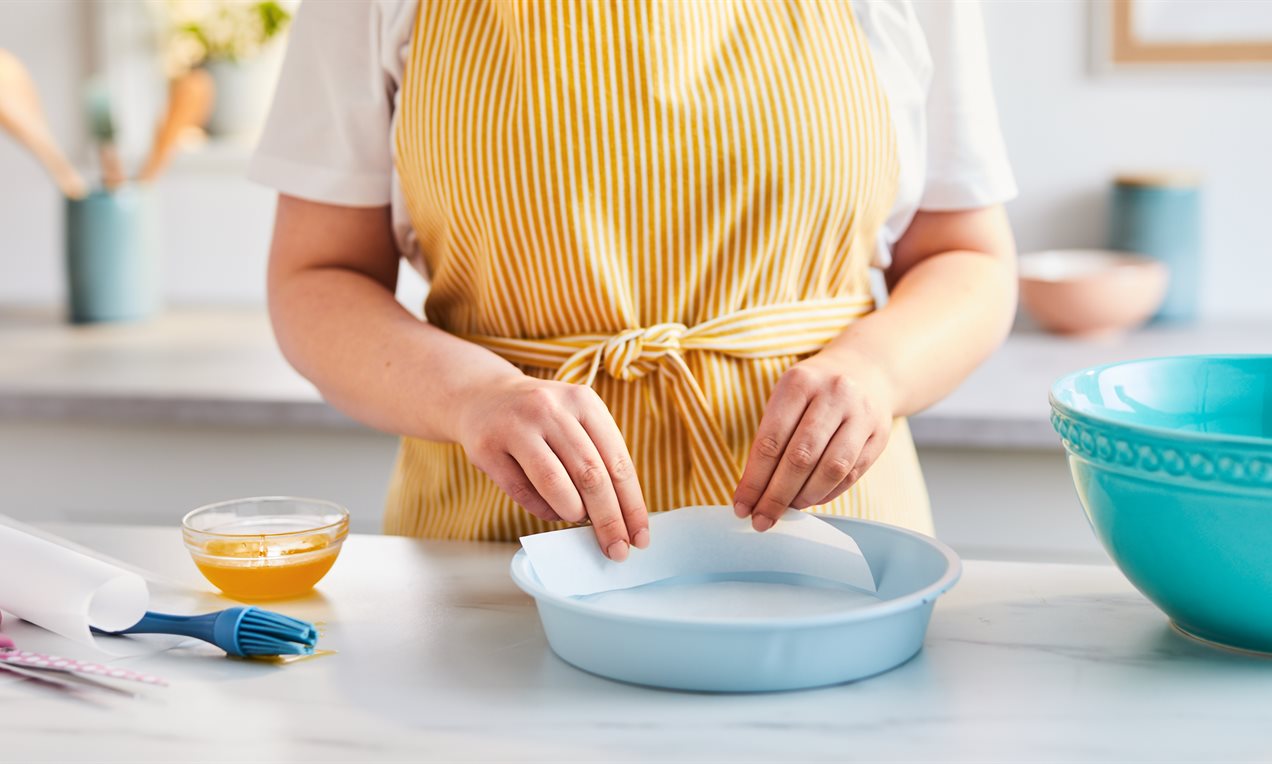
Place your cake tin on top of the baking paper and draw around it using a pencil. Use the scissors to cut this out. Cut a strip of parchment paper slightly longer than the circumference of the tin. This strip will go around the edge of your round tin. Make sure it’s wide enough to overhang a little over the top of the tin – 2-3 inches is a good benchmark.
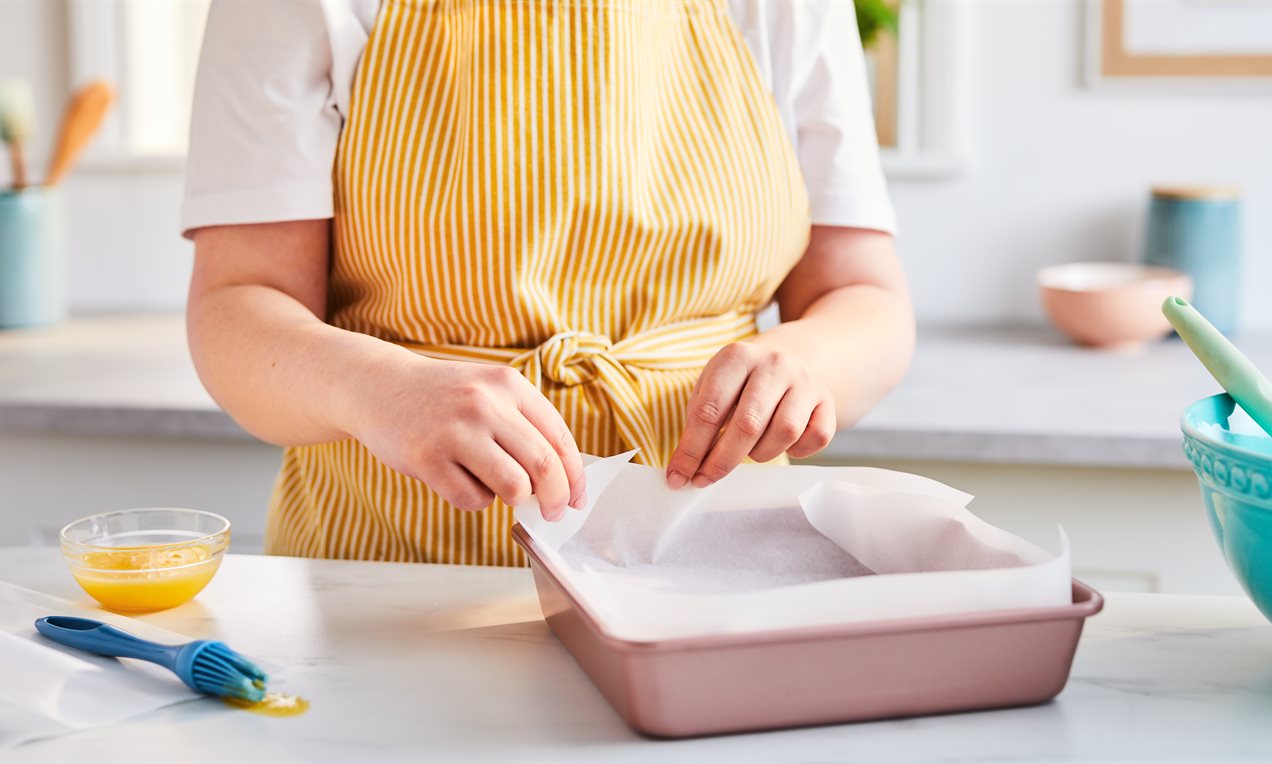
Put the tin on top of the baking paper and cut out, leaving a gap around the edge of the tin. This needs to be large enough to cover the bottom of the tin and up the edges. (Around 3cm is ideal). Cut a small line toward the centre of the parchment paper at each corner. This helps it fit into the corners of the tin.
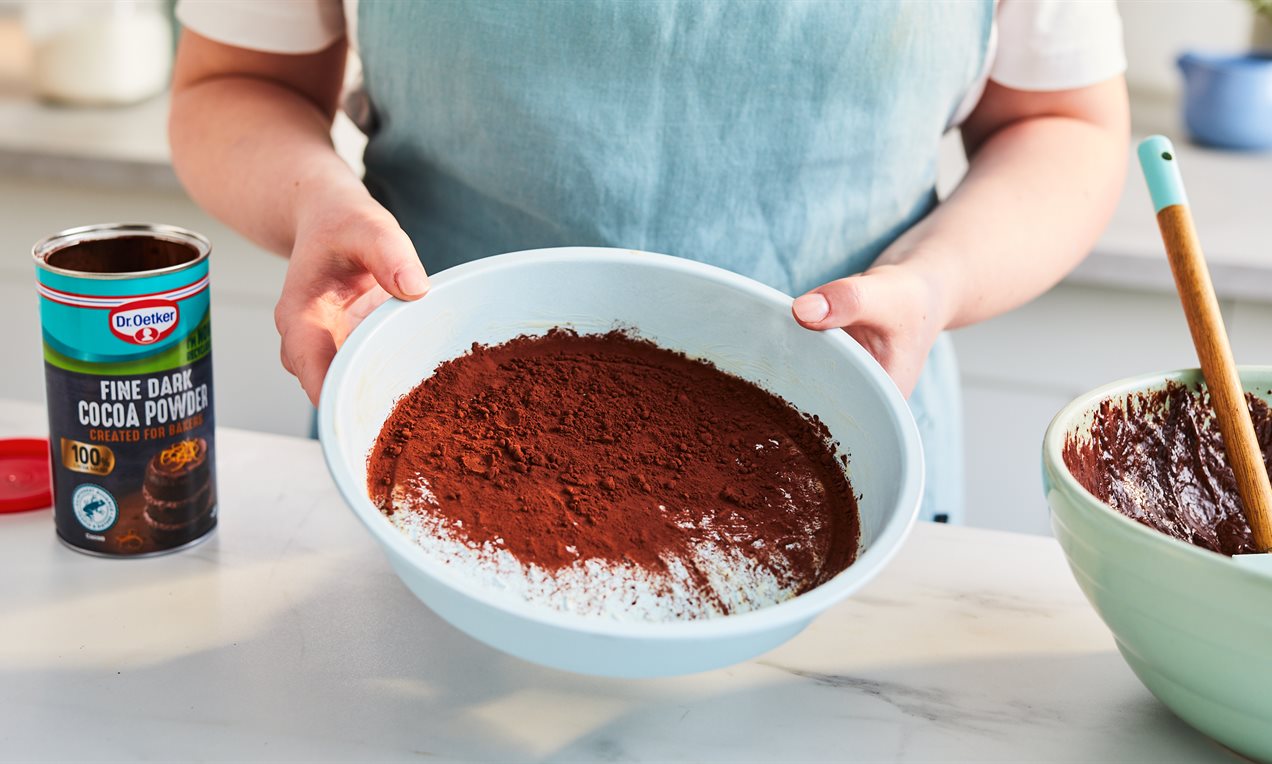
If you’re making a chocolate cake and want to add some extra flavour, you can add cocoa powder to the tin. To do so, follow the steps above then use the pastry brush to lightly coat the baking paper in margarine, butter or oil. Sift cocoa powder into the tin, and wiggle the tin around to allow the cocoa powder to coat the whole tin. Then tap out the excess.
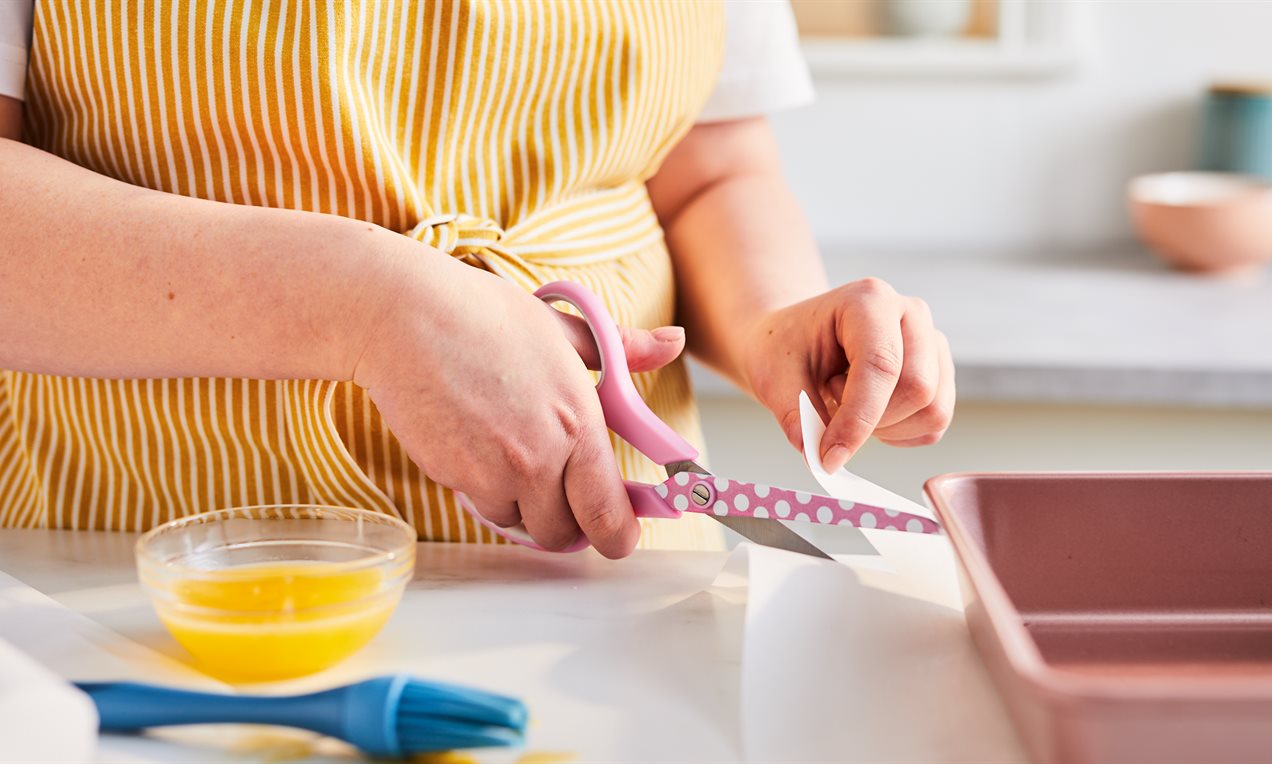
You should also measure your baking paper slightly larger so that it hangs over the top of the tin. Around 2-3 inches of excess is a good amount. This makes it easier to lift the bake out of the tin. Try not to have too much overhang, as this could hang into the bake and affect the overall look.
It’s important to use butter or oil in the tin before you put in the parchment paper, to allow the parchment paper to stick to the tin and ensure everything comes out easily.
It’s best to use margarine or butter when greasing your tin. This is because if you use oil, the parchment paper tends to move around when you put the mixture in, whereas with butter it allows the parchment paper to sit without much movement. Simply use a pastry brush to coat the tin with your butter or oil.
For Circle Cakes
1-Use your pastry brush to lightly coat your tin in margarine, butter or oil.
2-Place your circular piece of baking paper in the tin and press down.
3-Take your strips and press them into the sides of your circular tin, allowing the tops to overhang.
For Square or Rectangle Cakes
1Use your pastry brush to lightly coat your tin in margarine, butter or oil.
2Place your baking paper in the tin and overlap the four corners of the paper where the cut was made.
3-Press down to ensure there’s no creases or bumps.
Do I need greaseproof paper to make a cake?
If you don’t have any greaseproof paper, you can simply skip the paper. After greasing your tin with butter, dust your cake tin in flour and tap out any excess flour. Another alternative is sugar which can be applied after greasing and gives a slight crunch to the outside of your cake. However, using parchment paper gives more reassurance that your cake won’t stick to the tin.
What type of cake recipes should I be lining or greasing my cake tin for?
It’s important to line your cake tins for any recipes where your bakes are likely to stick including cakes, brownies, loaves and cheesecakes. You don’t need to grease your tin for recipes that use cases like muffins or cupcakes.
Do I need to line a silicone cake tin?
You don’t necessarily need to line a silicone cake tin, but we would recommend it. Over time, the non-stick element in silicone tins becomes less effective which will result in the cake sticking. You can grease the cake tin with butter, margarine or oil before use which won’t affect the bake and ensures it won’t stick to the silicone cake tin.
Can I use a cooking spray instead of butter?
Yes you can. But similarly to oil, it can make your baking paper move more when adding the mixture to the tin.
Now that you know how to line a cake tin, why not try it out with one of our delicious recipes like our celebratory Prosecco Cake or our crowd-pleasing Old School Sprinkle Cake? You’ll soon wonder how you ever baked without this simple technique. Plus, we have plenty more handy baking hints and tips at Dr. Oetker including how to soften butter and tips to prevent cakes doming.